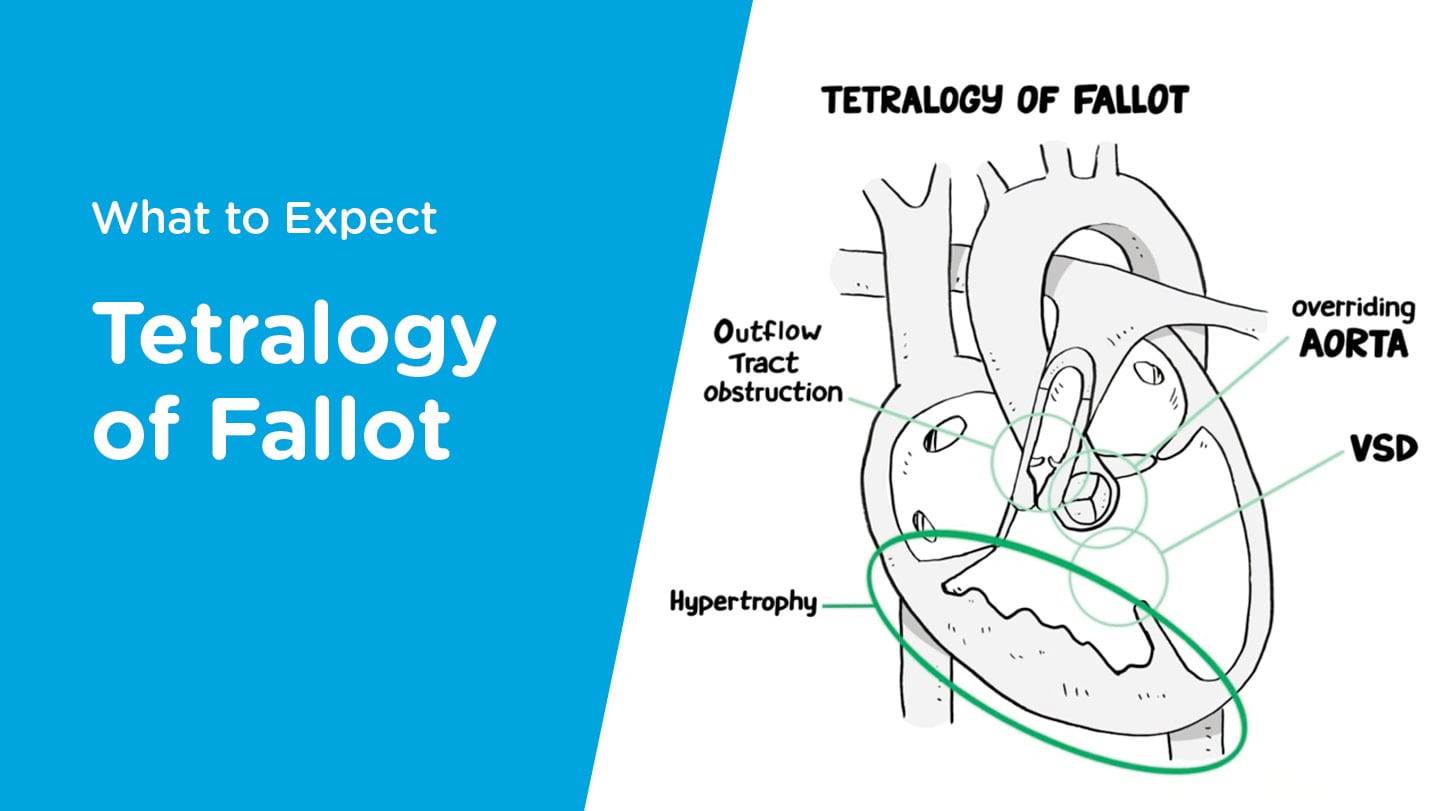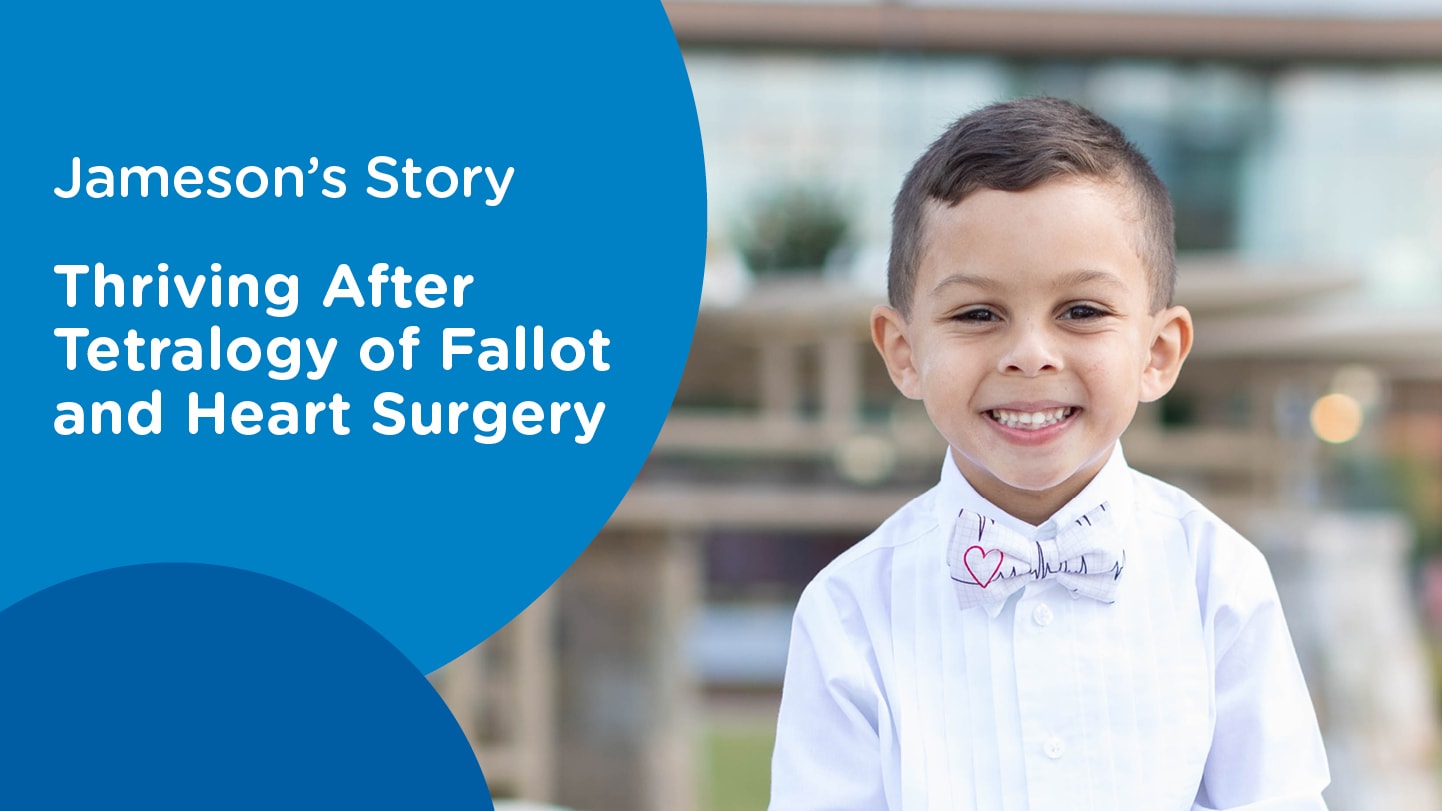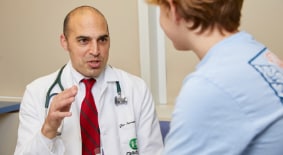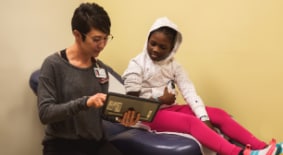Tetralogy of Fallot
What is Tetralogy of Fallot?
Tetralogy of Fallot is a congenital heart defect (CHD) affecting normal blood flow through the heart that occurs when a baby's heart does not form correctly in the mother's womb during pregnancy. It is made up of the following defects:
- Ventricular septal defect (VSD): a hole between the right and left pumping chambers (ventricles) of the heart.
- Overriding aorta: the aorta, the large artery that takes blood to the body, is enlarged and opens from both the left and right ventricles instead of just the left ventricle as in a normal heart.
- Pulmonary stenosis: narrowing of the pulmonary valve, the area below the valve, or the pulmonary arteries, which carry blood from the heart to the lungs.
- Ventricular hypertrophy: thickening of muscular walls of the right ventricle, which is a result of the right ventricle working harder to pump blood through the narrow pulmonary valve.
Tetralogy of Fallot can reduce the amount of oxygen in the blood that flows to the rest of the body. The severity of Tetralogy of Fallot can vary significantly, where some babies can appear to be very blue, with low oxygen levels, and other babies can have a normal appearance.
How is Tetralogy of Fallot diagnosed?
Tetralogy of Fallot can be diagnosed either before or after a baby is born. During pregnancy, there are screening tests to check for birth defects, and an ultrasound, which creates pictures of the baby using soundwaves, can help identify conditions in the fetus. If a heart condition is identified, your healthcare provider can request a fetal echocardiogram (an ultrasound of the heart of the fetus), which can show problems with the heart's structure and how the heart is working with the defect. An experienced fetal cardiologist can help determine the severity of the Tetralogy of Fallot, predict how blue the baby may appear after birth and make the appropriate recommendations for planning the baby's delivery.
Learn about our fetal cardiology team.
After a baby is born, Tetralogy of Fallot may be diagnosed if a baby has a heart murmur or turns blue during crying or feeding. Your healthcare provider can request tests to confirm the diagnosis, including an echocardiogram. Tetralogy of Fallot can also be detected during newborn screening using pulse oximetry, a bedside test that estimates the amount of oxygen in the baby's blood, which can identify a CHD before an infant shows any symptoms. Low levels of oxygen can be a sign of a critical CHD.
What are the symptoms of Tetralogy of Fallot after a baby is born?
Symptoms of Tetralogy of Fallot can include:
- Blue or purple tint to lips, skin and nails (cyanosis)
- Heart murmur
- Lower-than-normal oxygen levels in a baby’s blood
How do you treat Tetralogy of Fallot?
Tetralogy of Fallot is repaired with heart surgery within the first few months of life. The baby will require open heart surgery to patch the hole (VSD) and widen the pulmonary valve or artery. Some patients who have severe obstruction of flow to the lungs will receive a temporary repair until a complete repair can be done, connecting the pulmonary arteries (which carry blood from the heart to the lungs) to one of the large arteries that carry blood away from the heart to the body.
Our team of experts at the Children's Healthcare of Atlanta Heart Center is here to help provide guidance and care for children with Tetralogy of Fallot.
What is the future like for a child born with Tetralogy of Fallot?
Children with Tetralogy of Fallot can go on to live healthy, productive lives as adults. If your child had a surgical repair of Tetralogy of Fallot, he will require lifelong care by a cardiologist. Sometimes, children with Tetralogy of Fallot experience heart problems later in life, including a leaky heart valve and irregular heartbeat (arrhythmia), which can be treated with medicine or surgery.
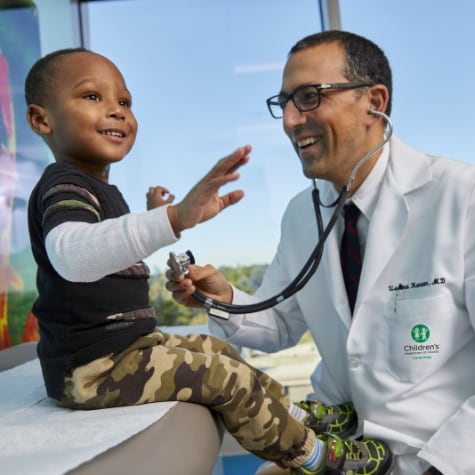
Pediatric Cardiology
Pediatric cardiologists specialize in the diagnosis, treatment and management of congenital heart defects and acquired heart disease in infants, children, teens and young adults.
learn moreCongenital Heart Defects Explained
-
Tetrology of Fallot
Watch us explain the heart conditions that make up Tetrology of Fallot and the surgery, also known as Blue Baby Syndrome.
-
Born With a Complex Condition, Jameson Has Bounced Back After Two Surgeries
Jameson’s resilient spirit and the dedicated team at Children’s helped get him back in the game.

Thriving Today After Three Heart Surgeries
At just a few days old, the Henderson’s received news from doctors about their son that no parent ever wants to hear: Michael needs heart surgery—and soon.
Read his storyMeet Our Cardiothoracic Surgery Team
At Children's, our cardiothoracic surgery team is dedicated to the well-being and care of children of all ages—from birth to 21—who have been diagnosed with a congenital heart defect.
- Paul Chai, MD, Chief of Cardiothoracic Surgery and Co-Chief of the Children's Heart Center
- Joshua Rosenblum, MD, PhD
- Subhadra Shashidharan, MD
- Fawwaz Shaw, MD
- Mohan John, MD
- Kimberly Woodall, CPNP
- Melanie McBrayer, CPNP
Resources for Heart Families
Contact Us 404-256-2593
